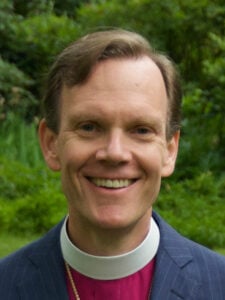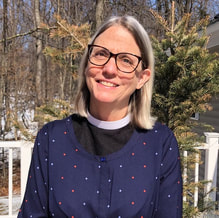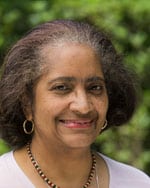Marriage and Remarriage
See also Weddings and Funerals For NYC Marriage Officiant Registration Information, click here .
For Anglican/Roman Catholic marriages, click here
Two Title I Canons of the National Church deal with the question of marriage. Canon 18, ‘Of the Solemnization of Holy Matrimony,’ covers all marriages. Canon 19, ‘Of Regulations Respecting Holy Matrimony: Concerning the Preservation of Marriage, Dissolution of Marriage and Re-marriage.’ (See right sidebar for links to National Constitution and Canons).

Application To The BishopSeeking Consent For RemarriageRev April 2016
Download 1.17 MB
Application To The BishopSeeking Consent For RemarriageRev April 2016
Download 1.17 MBSection 3 of Title I, Canon 19 of the National Church deals with the consent of the Bishop in the case of re-marriage. The form downloadable from the link above is to be completed by the parties indicated, signed and submitted to the Bishop by the Priest who will be performing the marriage.
Civil Authorization To Perform Marriages
In parts of the Episcopal Diocese of New York outside New York City, no action in the form of registering with civil authority is known to be required. If a marriage is to be solemnized in any of the five boroughs of the City of New York, however, the clergy person must submit a notarized form available from the New York City website.
Mixed Marriage
A report of the Committee on Christian-Jewish Relations of the Diocesan Ecumenical Commission states the predominant policy of the rabbis involved. This policy should be respected by our clergy and people. There is no uniform policy in the Episcopal Church insisting upon the conversion of Jewish persons, nor of members of other Christian communities to the Church. This does not mean, however, that in pre-marital counseling witness to the faith of the Church is abrogated. Witness is a constant call upon us. Such witness should be invitational, not schematic proselytism.
Marriage Laws of New York (Domestic Relations Law)
How do you get married?
Under New York law, a couple wishing to be married must (1) get a marriage license and (2) within sixty days take the license to the person who solemnizes the marriage, completes the form, and returns it to the issuer. That office sends the couple a marriage certificate within fifteen days. Although this sounds simple, in reality there are details which the “solemnizer” needs to be aware of in order to discuss them as needed with the couple, especially when one or both people are not well known to the officiant. The person who solemnizes the marriage may be a member of the Episcopal clergy, which is the situation we discuss here. To perform a marriage in any borough of New York City, the cleric must also previously have registered once at the City Clerk’s office in Manhattan, 1 Center Street, Room 265 (212-566-3245). Clerics may register by completing and notarizing a form available from the Bishop’s office. This form is to be returned to the Bishop where it will be processed and sent forward to the city. It is no longer necessary to present one’s documents in person at the City Clerk’s office. Notice that “common-law marriages” are now forbidden, but the state still recognizes those entered into in New York State before 29 April 1933 and for those moving into New York State from places where they were valid at the time common-law marriage was created. In other words, in most current situations for New Yorkers, even long-term cohabitation is not recognized by the State as constituting a marriage. How does the couple feel about their status before God? If they feel they really are already a “married couple,” they can be encouraged to regularize their position with a civil marriage and come to the church for a blessing of the existing marriage. Frequently the planning of a marriage brings up legal issues for which the couple should be encouraged to get sound legal advice. In any case they should be reminded to make new wills after the marriage is finalized.
When is a marriage not a marriage?
There are situations where a couple is apparently married but later issues are raised to show that the marriage was in some way void or voidable, and/or a court may declare it annulled (never legally occurred). These situations are primarily concerned with:
- Inability to give appropriate consent because of youth, mental incapacity, or physical incapacity; or because force, duress, or fraud was used to obtain consent.
- Consanguinity – specifically ancestor and descendant, whole- or half- brother/sister, uncles and niece, aunt and nephew.
- Bigamy – The clergy must review the documents terminating all previous marriages to be certain that a final decree of dissolution or annulment has been issued for each such event (as required by diocesan policy).
All these issues can be appropriately raised with the couple in pre-marital sessions while discussing the opening questions of the marriage ceremonies.
Details on “inability to give appropriate consent”
Youth. The person issuing the license is responsible for securing proof of age if an applicant appears to be under 18, and must not knowingly issue a license to someone under 14. Persons 14 to 17 require written parental or guardian’s permission. (Consent of both parents if possible. If they are divorced, the custodial parent’s consent suffices. If one parent has been adjudicated incompetent, the other’s consent is sufficient.) Those 14 or 15 need a specified judge’s consent also. Mental Incapacity. Each person has to be able to understand what is meant by marriage and that they are being married. “Mental incapacity” includes not only deficiency and illness but being under the influence of drugs or alcohol at the time of the wedding. It may be necessary to delay, postpone, or refuse to perform the marriage. Physical Incapacity. This refers to impotence but not to sterility, to sexual performance not fertility. However, impotence after consummation of the marriage is not enough to void the union. Fraud. Some examples of deceit that have been used as grounds for annulment include concealing information about venereal disease or a pregnancy by another man or previous marriage (but not lack of chastity), a criminal record, infectious disease, or an inability to engage in sex or to have children. Prisoners. In New York State, a prisoner serving a life term may marry only if and when he or she is paroled. Other prisoners may marry.
Obtaining a Marriage License
In New York State law, a marriage license must be obtained by a couple at the office of a town or city clerk. It is not necessary for either the bride or the groom to be an American citizen or a “resident alien”. The bride and groom must appear in person with proof of age and identification to answer specific questions about their names (including additional names by which they may have been known), current addresses, occupation, date and place of birth, name and birthplace of parents, and a listing of previous marriages and their outcomes. They may also indicate any change of surname by which one or both wishes to be known after the marriage. They need not take the same surname. This is the only opportunity to have such changed names appear on the New York marriage certificate, and will be proof they may lawfully use that name. This change of surname by marriage license is restricted to four options:
- the surname of the other spouse
- any former surname of either spouse
- a new single surname combing all or part of the present (or former) surnames of each spouse
- a new hyphenated surname where each part is the present or past surname of one spouse or the other
When and how to complete the license
It is strongly recommended that the officiant secure the license from the couple at the time of the rehearsal at the latest. It should be read carefully before the couple leaves, because from to time there may be problems with the date and time restrictions, alterations of name, or a previous marriage not disclosed to the cleric, or even multiple marriages where only one has been mentioned. The rehearsal is also a good time to be sure of the full name and current address of the proposed witnesses, and to show them and the bridal couple where they will sign the license (and church register) at the wedding. If the bride or groom has chosen a new surname when they applied for the license, the new name should be used at the time of signing. It is, however, illegal for any signature to precede the ceremony, and dangerous to fill in other items ahead of time since alterations void the document. A last-minute change of witness or officiant may occur, and the wedding itself may be altered in time or place, or indeed may be canceled. If the couple wishes to cancel the wedding, they write the word “cancel” across the officiant’s section, and the non-bride and the non-groom sign at the bride and groom lines. The form should be mailed before its expiration date to the issuing office in its official envelope. The form requires the officiant’s residential street address and the precise location and hour (including a.m. or p.m.) of the ceremony. The officiant is legally responsible for the return of the completed form to the issuing office in the envelope provided within five days after the ceremony. In any case where a court order gave permission to perform the ceremony during the first 24 hours after the license was issued, the officiant also attaches that document to the completed license. From time to time New York State (and also New York City) issues a leaflet updating information on marriage laws. Copies should be obtained from a town or city clerk for the state (and from any Borough Hall for the city).
Bishop's Office Contacts
The Rt. Rev. Matthew F. Heyd
Bishop of New York
Office: 212-316-7413
bpheyd@dioceseny.org
The Rt. Rev. Allen K. Shin
Bishop Suffragan
Office: 212-316-7465
Fax: 212-316-7405
bpshin@dioceseny.org
The Rt. Rev. Mary D. Glasspool
Bishop Assistant
Office: 212-316-7442
bpglasspool@dioceseny.org
The Rev. Canon Alissa Newton
Canon to the Ordinary
Cell: 646-939-9799
Office: 212-316-7415
anewton@dioceseny.org
The Rev. Alison Quin
Intake Officer
Office: 845-901-8103
intake@dioceseny.org
Ms. Michelle Chang
Executive Assistant to the Bishop Suffragan and the Assistant Bishop
Office: 212-316-7484
Fax: 212-316-7405
mchang@dioceseny.org
Ms. Arlene Bullard
Executive Assistant to the Bishop of New York
Office: 212-316-7413
Fax: 212-932-7318
abullard@dioceseny.org
Mr. Nicholas Gordon
Director of Special Projects
Office: 212-316-7363
ngordon@dioceseny.org
Ms. Elaine Delgado
Director of Transition
Office: 212-316-7355
edelgado@dioceseny.org







